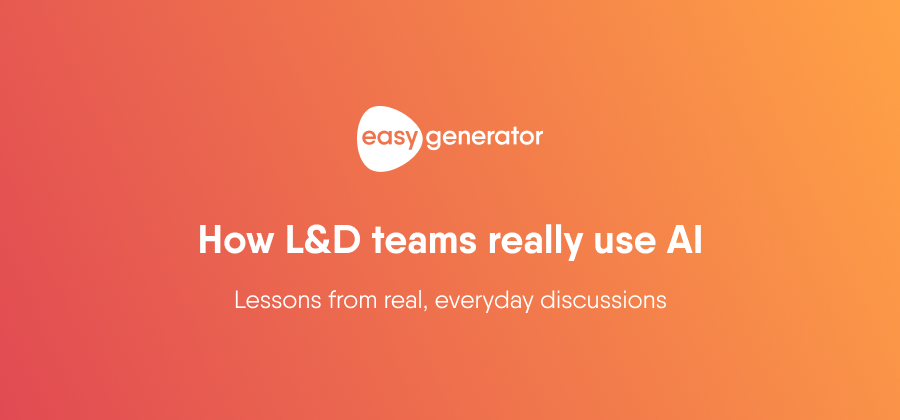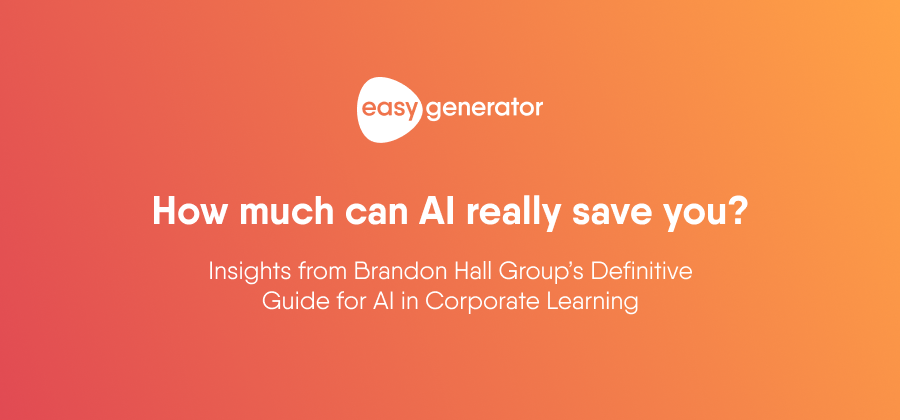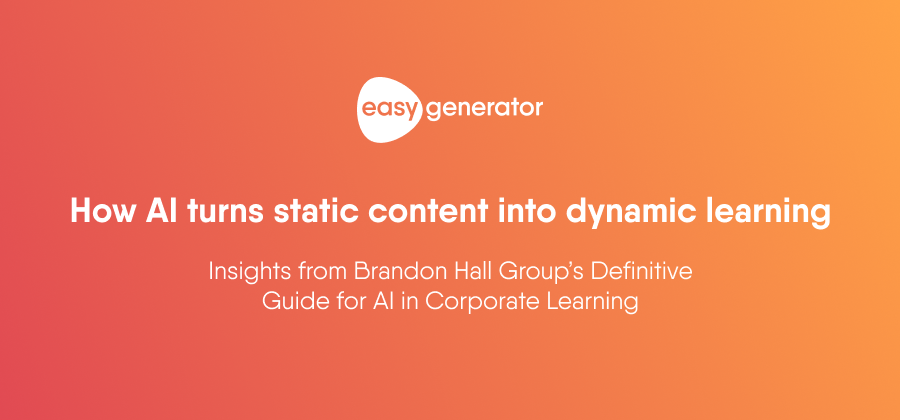The role of e-learning in onboarding and employee retention
While recruitment is generally considered to be the hardest aspect in enticing a new employee, retention can often prove to be just as, if not, the hardest detail in doing so.

A low retention rate is the result of many factors, such as difficulties in fostering relationships with colleagues, an apathetic workplace or even absentee supervision. When it comes to challenges faced, problems in retention continue to reign for many organizations. Since no organization can thrive without its employees, an onboarding program that is constructive and comprehensive can help mitigate this issue.
Onboarding is defined as “the process by which new hires are emotionally, physically and professionally integrated into the established culture and operations of their new employer”.
The success of an onboarding program is bipartite. At the end of the program, an employee should be knowledgeable on 1) the company’s services and operations and 2) the workplace’s culture, both socially and professionally. A simple onboarding training can make all the difference between an employee feeling welcome in their new workplace and striving to achieve their best and feeling insecure and invisible.
Get inspired reading our free employee onboarding program guide.
Improving employee onboarding with e-learning
The customary routine for a new hire training program is to have a classroom setup. However, this can be fairly counterproductive due to the potential costs involved. It also takes employees, both new and current, away from their work which can be frustrating.
More and more organizations are now incorporating (or switching to) e-learning in their new hire training programs, as a flexible, intuitive and cost-effective alternative. Learn more about the benefits of e-learning for employees.
As well as the cost- and labor-saving impact of e-learning onboarding training, there are a number of other benefits to your new hires:
1. Absorbing onboarding training in their own time
Onboarding best practices include ensuring that training is a continuous affair instead of a one or two-day program, and e-learning can enable this.
The first few days can be rather overwhelming for new employees. Information is thrust upon them from every direction, resulting in a great amount of stress. Many employees often forget what they learned during onboarding as soon as the program is over. An onboarding training program in an e-learning format equips new employees to study the training materials at their own convenience. It gives them time to absorb a set of material before moving on to a new set.
Get started with our onboarding template
2. Personalized learning
Another benefit of e-learning is that it can be customized to adapt to the needs and objectives of what an organization wants a new employee to learn. An onboarding best practice that could only be achieved fruitfully through e-learning is the tailoring of programs to individual employees.
While traditional onboarding programs often dictate employees to sit through endless descriptions and demands that don’t concern them, e-learning allows employees to learn only what they need. It also paves the way for employees to read up on important details such as policies and procedures beyond the onboarding program and when they actually need it. This way, the loss and mix-up of vital information presented during new hire training programs are circumvented.
Yet another onboarding best practice would be to employ the blended learning approach; the use of engagement and a staggered onboarding program to maximize the program’s benefits.
Heard of Right-skilling?
Are you prepared for the future of training in the era of ‘The Great Resignation’? Watch our free webinar for why you should leverage Right-skilling and how to get started.
3. Make learning manageable with microlearning
One way to engage new hires during onboarding training is to implement microlearning; a process where huge chunks of information are segmented into concise topics. By leveraging on the brain’s tendency to consume in short, simple components, microlearning will ultimately be a highly effective method.
The impact of effective onboarding training on employee retention
Since it has been found that new hires who underwent a positive introduction to the organization and their position have a tendency to stay longer, onboarding programs must be as effective and intuitive as possible.
Ninety percent of employees recruited decide whether they are going to stay or leave an organization within their first six months there, so first impressions are crucial. This will subsequently have a strong impact on an organization’s employee retention rates.
Not only do low retention rates cost the organization money and time spent on onboarding, but it can also be detrimental to the organization’s well-being if former employees speak ill of it. Potential top talent might consider competing organizations instead.
While a new hire training program can help with the retention of employees, and thereby the success of the organization, e-learning can be a substantial step in onboarding best practices. E-learning promotes the accessibility of an employee’s learning as it can be done through a variety of devices, it can be customized from employee to employee, and microlearning can be engaged.
To kick-start your onboarding program, why not download Easygenerator’s Onboarding Starter Pack.



